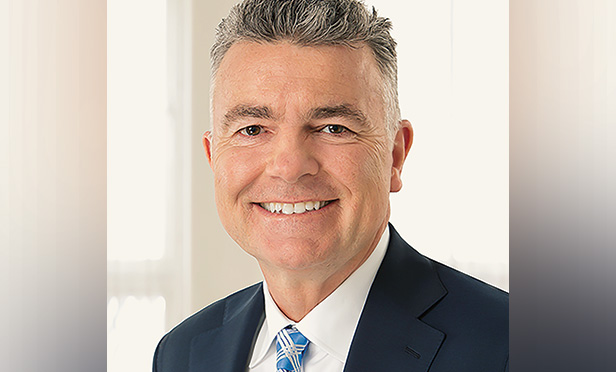

BNY Mellon Pershing CEO Jim Crowley has been with the clearing and custodial firm since 1985, but he's been in his new role for just two months — after taking the baton from Lisa Dolly, now chairperson of Pershing Group LLC. The executive recently took the time to share his insights on the industry and what lies ahead.
What's your view of the wealth-management business today?
Looking at the landscape, it is quite dynamic and changing pretty dramatically — whether it's a transaction, with two similar firms coming together to create more scale or one firm joining another to enter a new marketplace geography or business model.
There's also the convergence of these business models. In much deeper ways than before, firms are really thinking about how they serve the advisors in their network and are shifting from a grid mentality to a fee-for-service approach to support their advisors — much like a custodian rather than a broker-dealer.
We believe the advisory movement is working across both the FINRA- and SEC-regulated regimes. We're agnostic to whether the advisor sits in a corporate RIA affiliated with a broker-dealer or with a standalone, independent RIA firm.
We're starting to hear firms refer to themselves not as broker-dealers but as financial-services firms or financial-planning firms. In fact, we see more and more firms becoming plan-led as opposed to investment-led in an effort to differentiate themselves in the marketplace and combat price or margin compression.
How do you view your clients within this changing landscape?
We have approximately 1,300 clients that we serve globally. Clients fall into three broad categories. We serve about 750 RIAs and roughly the same number of broker-dealer firms in our custody and clearing business — [some of which are dually registered]. With the clearing business, there's another group of about 100 clients that are either hedge funds or '40 [Investment Company] Act fund managers [registered with the SEC].
The brokerage model is still a significant business here at Pershing and in the industry. With Reg BI [or the SEC's Regulation Best Interest], these two businesses — the advisory business and the brokerage business — are starting to look more alike. The best interests of the client are being served better, and that's what's really important.
As a clearing and custodial firm, we have a very disciplined approach to the types of clients that we want to serve and support. For instance, if you're looking at our custody business compared to any of our competitors, our average custodial advisory relationship is much, much larger.
When Advisor Solutions CEO Mark Tibergien speaks to the idea that we're serving growth-minded, professionally managed advisory practices that serve clients with complex financial needs, you can see that in what our average advisory firm has as AUM relative to the average assets of clients with other custodial firms.
The same is true in the broker-dealer business, where we are being sought out by larger, more complex broker-dealer firms looking to partner with a clearing firm/custodian with a broad range of capabilities to serve the types of advisors and clients they have through more holistic technology solutions and product solutions — such as lending. This is really how we are distinguishing BNY Mellon Pershing in the marketplace.
Where do you see Pershing in terms of tech partnerships or integration?
Our mission and desire is to help our clients run their businesses more efficiently, so they can serve their clients more effectively, and so we are creating a noticeably superior experience for the client.
As for how we are building and designing a technology stack that addresses unique client needs, we are doing this via intelligent open architecture and via integrations with third-party providers that have substantial commercial backing — meaning substantial businesses, client rosters, revenues and balance sheets — and relevant and sustainable businesses to support our clients in a scalable way. About two-thirds of the firms that we work with integrate with third-party technology connections that we have.
We are also continuing to build our own technology stack, which roughly one-third of our clients use. And we still see a few clients continue to build their technology from the ground up.
More and more firms are looking for what we call enterprise technology solutions so they can migrate away from designing their own portfolio of solutions. They're looking to simplify their technology stack and their investments in that stack to differentiate themselves. They are relying more heavily on enterprise solutions like ours that offer flexibility and good commercial terms to drive their scalability and create a powerful client experience.



